Resources
Blog
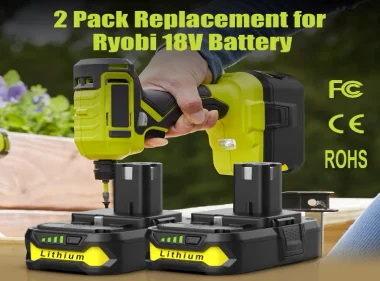
Ryobi 18V Battery Maintenance and Care Tips
Maintaining your Ryobi One+ 18V batteries is essential to preserve capacity, ensure safety, and avoid premature replacements. Follow these six care pillars—enhanced with our interactive Runtime Calculator and tear-down video—to maximize performance and longevity.

Troubleshooting Common Ryobi 18V Battery Issues
Healthy Ryobi One+ 18V batteries are crucial for consistent drill battery performance and overall tool reliability. Whether you’re facing a pack that refuses to charge, drains too quickly, or overheats, these five troubleshooting steps will have your drill back in action in no time.

Makita LXT vs CXT Battery Packs: Which One to Choose? | XNJTG
Makita’s two Li-Ion ecosystems—18 V LXT and 12 V CXT—each excel in different use cases. Choosing the wrong platform can cost you hundreds in inefficiency and fatigue. This guide breaks down specifications, real-world performance, total cost of ownership, and helps you decide with an interactive compatibility widget and a simple decision framework.

Makita 18V Drill Battery Cold-Weather Charging Rules
Charging or using Makita 18V drill batteries in sub-freezing conditions accelerates capacity loss, triggers BMS lockouts, and can create safety hazards. Follow these five rules—along with emergency protocols and retrofit solutions—to keep your packs reliable, even in –30°C.
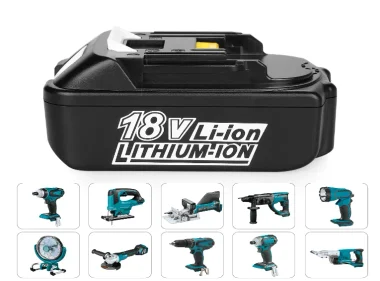
Signs Your Makita 18V Drill Battery Replacement Needs an Upgrade
Discover the warning signs that your Makita 18V replacement drill battery pack is underperforming and learn when to upgrade for peak tool performance.

5 Tips for Properly Storing Your Makita 18V Drill Battery
Maintaining your Makita 18V Li-ion packs between jobs isn’t “set-and-forget.” Proper storage preserves capacity, prevents BMS lockouts, and minimizes safety risks. Follow these expert answers to the five most common storage questions.
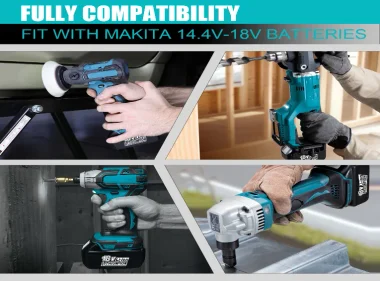
Signs Your Makita 18V Battery Replacement Needs an Upgrade
Replacing an underperforming Makita 18V pack isn’t just a swap—it’s a performance upgrade. Learn the key signs your replacement drill battery is already off its game, what causes premature pack failure, and how to choose and install the right high‑performance option.

Makita 18V Battery Maintenance and Care Tips
Maximize runtime and lifespan of your Makita 18V drill batteries with expert maintenance and care tips from XNJTG—cleaning, charging, storage, and more.
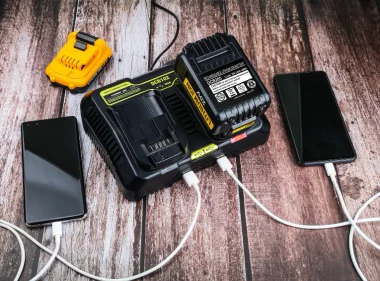
7 Signs Your DeWalt Charger Needs Replacing
-
7 Signs: No LEDs, error‑flash codes, much slower charging, overheating, burning smell/melted plastic, sparks or frayed cords, and batteries that swell or fail after charging.
-
Quick Checks: Verify outlet/cord, clean contacts and rest 10 min, then test with a known‑good battery.
-
Keep It Healthy: Monthly dust-out and terminal wipe, 10cm vent clearance, and operate between 5°C–40°C.

DeWalt Battery Charger Compatibility Guide by Model
Avoid mismatches, protect your batteries, and ensure safe charging by using the correct DeWalt charger for each platform—12V MAX, 18V/20V MAX, FlexVolt, PowerStack, and more. This model‑by‑model guide helps you pick the right charger every time.
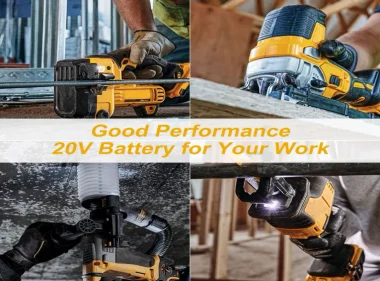
5 Industrial‑Grade Safety Tips for Your DeWalt Battery Charger
Implement these five pro‑level safety measures—covering electrical inspection, heat management, platform pairing, environmental control, and emergency readiness—to extend charger and battery life, prevent shock or fire, and minimize downtime.
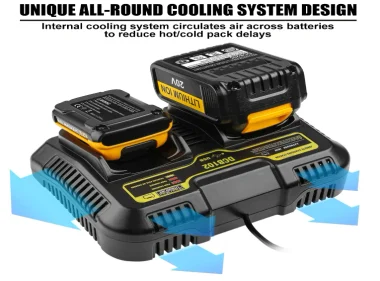
Installation & Safety Best Practices for DeWalt Battery Chargers
Correctly selecting, mounting, and maintaining your DeWalt charger not only maximizes its lifespan but also keeps your workshop safe and code‑compliant. Below are expert tips—backed by real‑world jobsite insights—to guide you from pre‑installation prep through routine maintenance.
Let our battery power your success
Transform your path to success with our advanced battery technologies, while enjoying the perks of free technical guidance and tailored design services to meet your unique requirements.